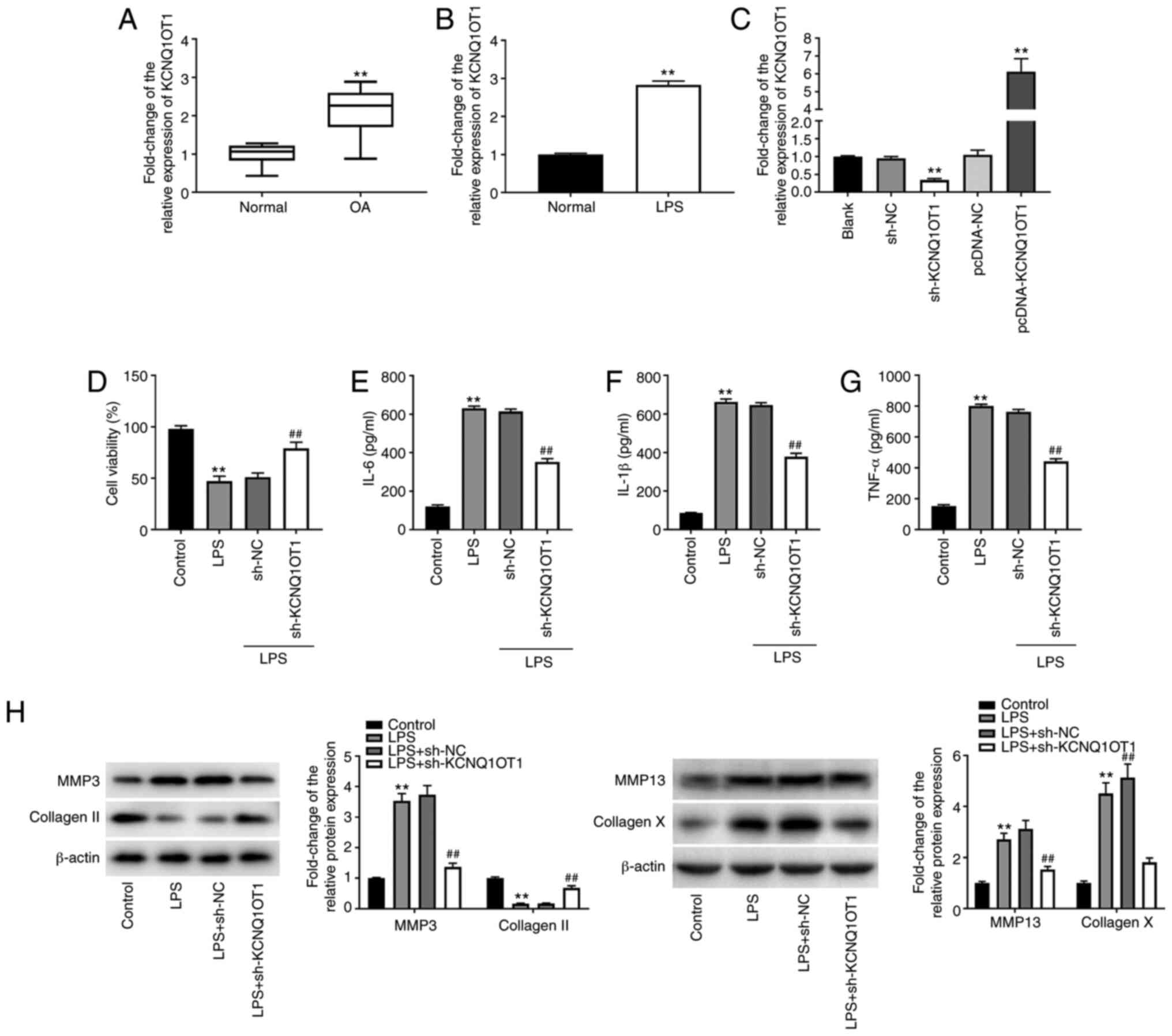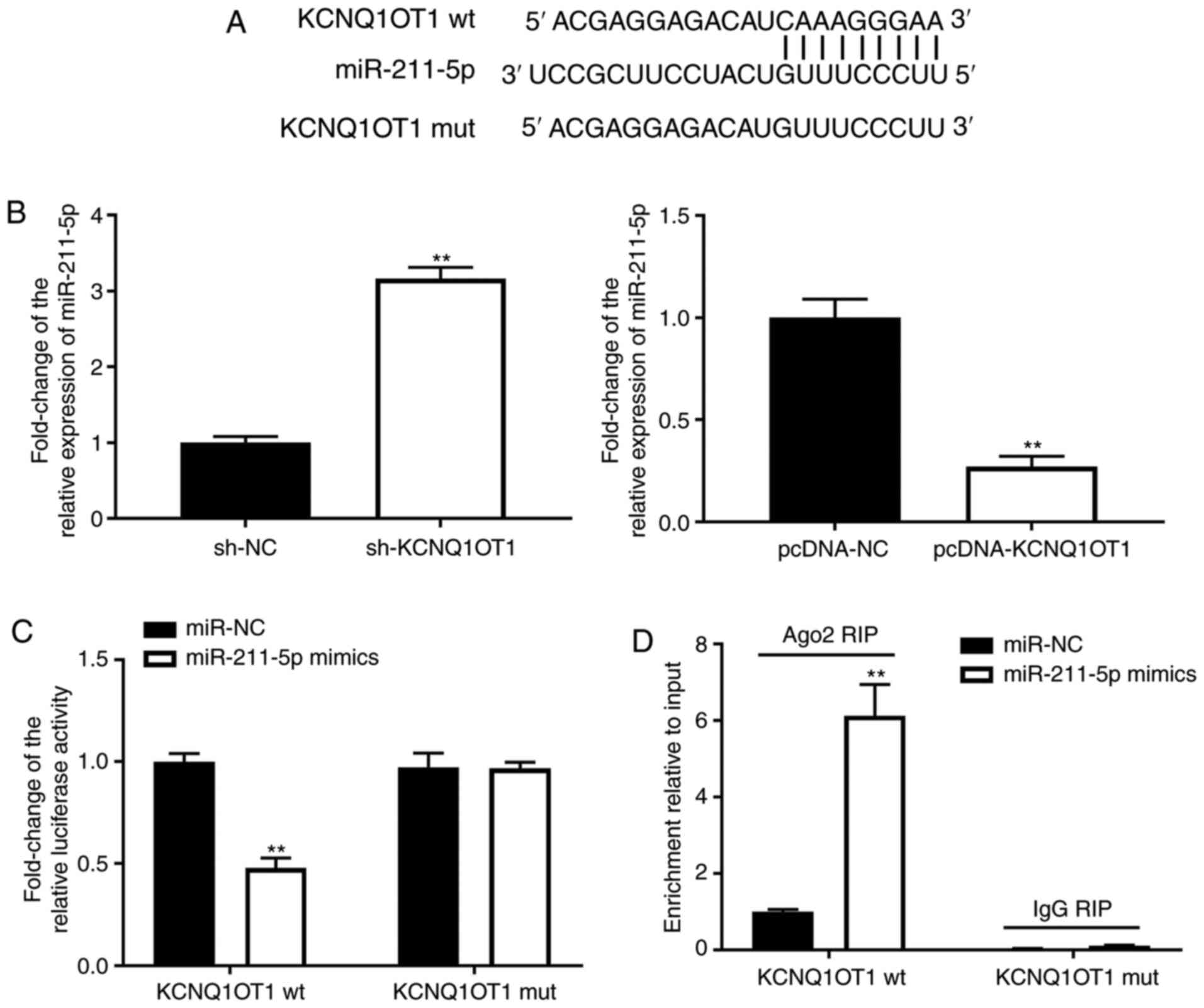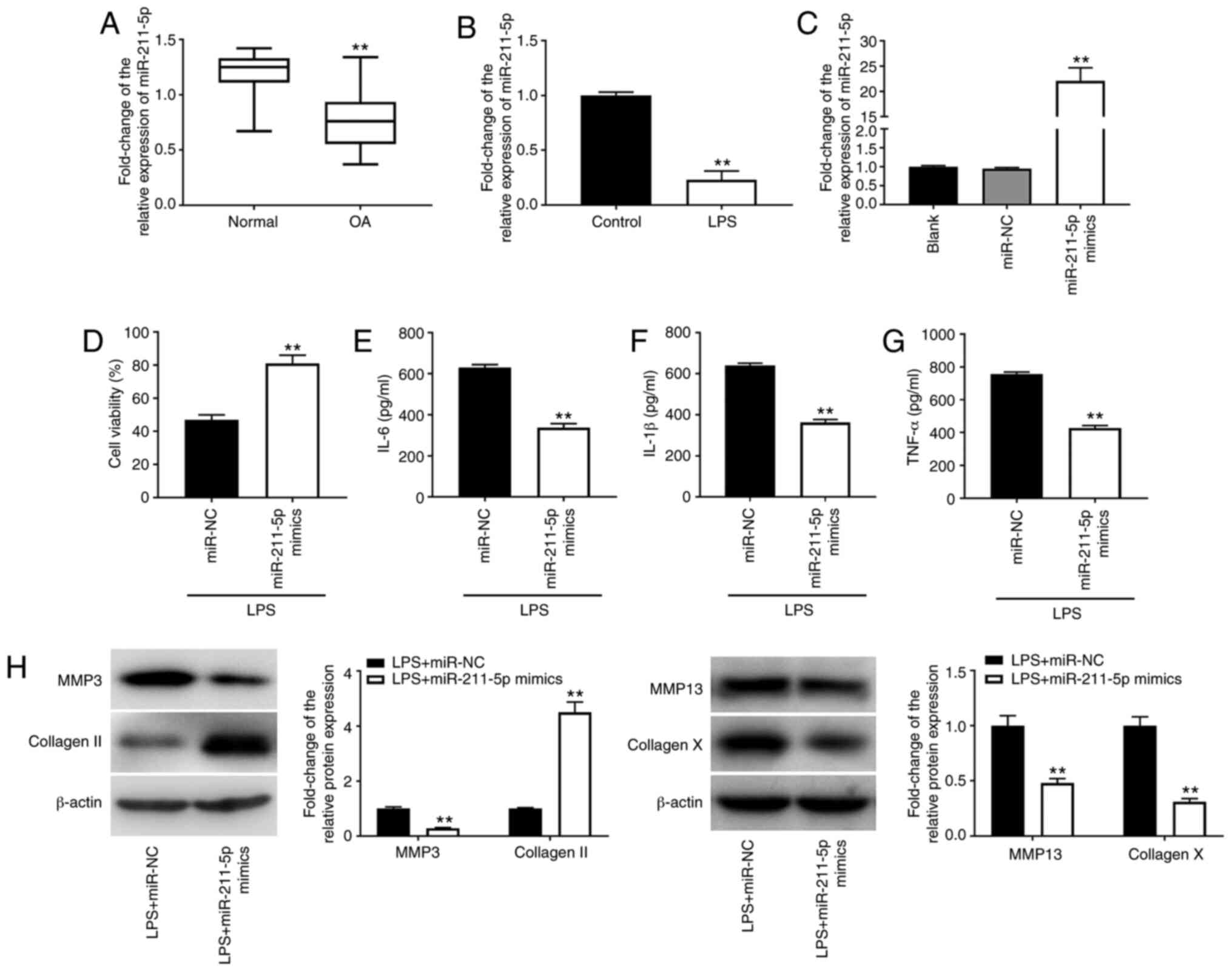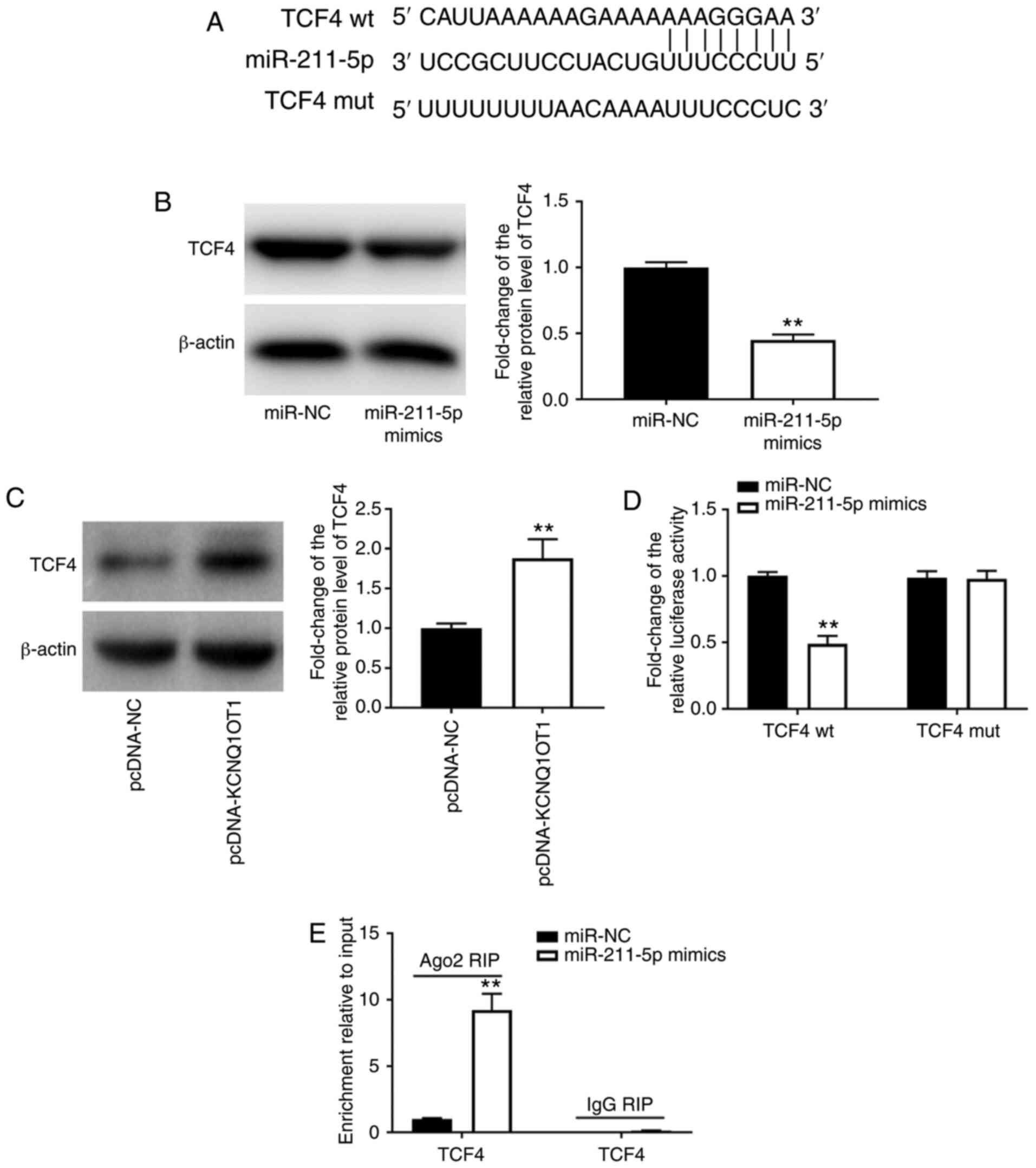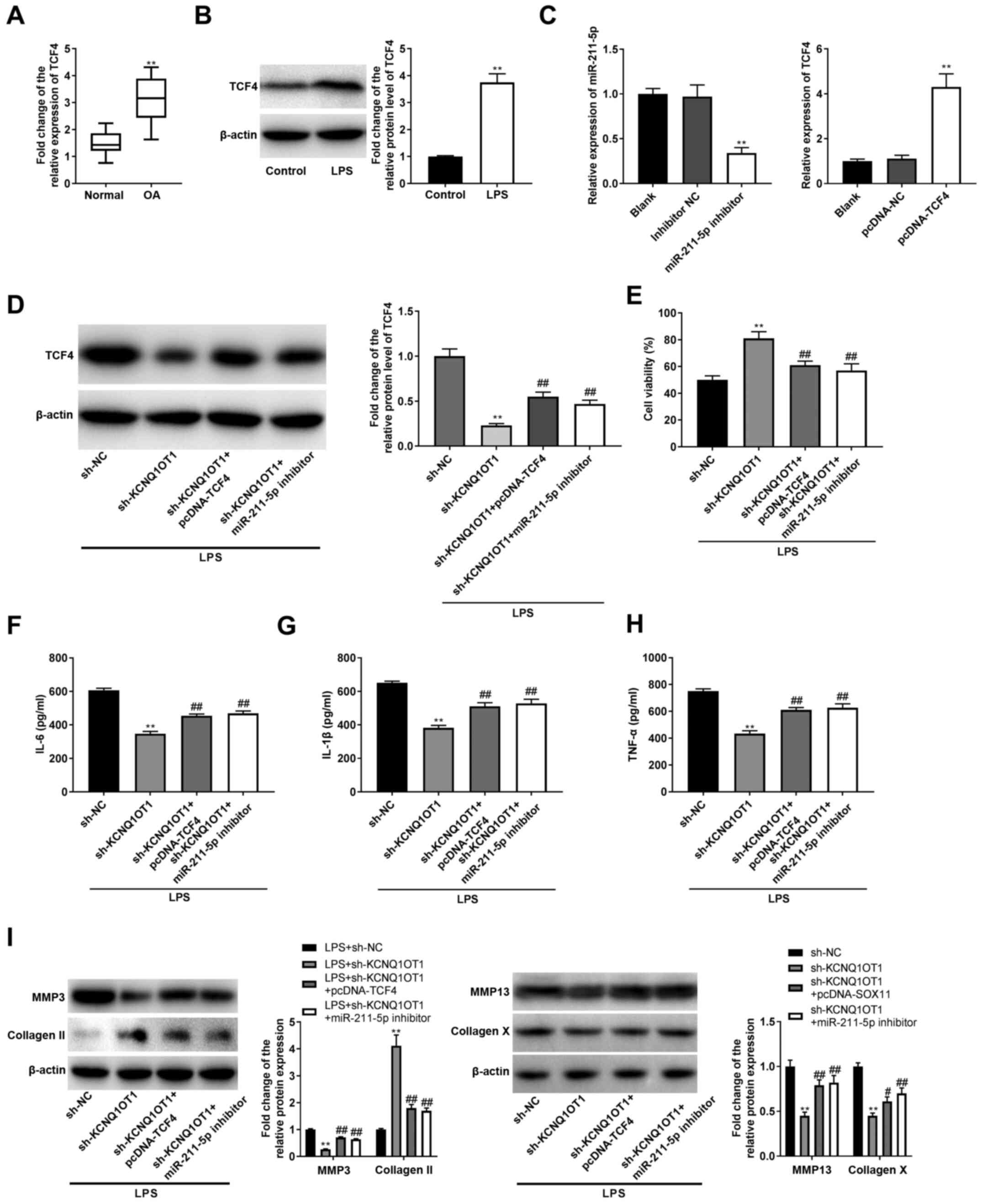|
1
|
Ashford S and Williard J: Osteoarthritis:
A review. Nurse Pract. 39:1–8. 2014.PubMed/NCBI View Article : Google Scholar
|
|
2
|
Madry H, Luyten FP and Facchini A:
Biological aspects of early osteoarthritis. Knee Surg Sports
Traumatol Arthrosc. 20:407–422. 2012.PubMed/NCBI View Article : Google Scholar
|
|
3
|
Xia B, Di C, Zhang J, Hu S, Jin H and Tong
P: Osteoarthritis pathogenesis: A review of molecular mechanisms.
Calcif Tissue Int. 95:495–505. 2014.PubMed/NCBI View Article : Google Scholar
|
|
4
|
Woolf AD and Pfleger B: Burden of major
musculoskeletal conditions. Bull World Health Organ. 81:646–656.
2003.PubMed/NCBI
|
|
5
|
Migliore A, Paoletta M, Moretti A, Liguori
S and Iolascon G: The perspectives of intra-articular therapy in
the management of osteoarthritis. Expert Opin Drug Deliv.
17:1213–1226. 2020.PubMed/NCBI View Article : Google Scholar
|
|
6
|
Taruc-Uy RL and Lynch SA: Diagnosis and
treatment of osteoarthritis. Prim Care. 40:821–836, vii.
2013.PubMed/NCBI View Article : Google Scholar
|
|
7
|
Fritah S, Niclou SP and Azuaje F:
Databases for lncRNAs: A comparative evaluation of emerging tools.
RNA. 20:1655–1665. 2014.PubMed/NCBI View Article : Google Scholar
|
|
8
|
Chen WK, Yu XH, Yang W, Wang C, He WS, Yan
YG, Zhang J and Wang WJ: lncRNAs: Novel players in intervertebral
disc degeneration and osteoarthritis. Cell Prolif.
50(e12313)2017.PubMed/NCBI View Article : Google Scholar
|
|
9
|
Liu Y, Liu K, Tang C, Shi Z, Jing K and
Zheng J: Long non-coding RNA XIST contributes to osteoarthritis
progression via miR-149-5p/DNMT3A axis. Biomed Pharmacother.
128(110349)2020.PubMed/NCBI View Article : Google Scholar
|
|
10
|
Chen Y, Zhang L, Li E, Zhang G, Hou Y,
Yuan W, Qu W and Ding L: Long-chain non-coding RNA HOTAIR promotes
the progression of osteoarthritis via sponging miR-20b/PTEN axis.
Life Sci. 253(117685)2020.PubMed/NCBI View Article : Google Scholar
|
|
11
|
Zhang X, Huang CR, Pan S, Pang Y, Chen YS,
Zha GC, Guo KJ and Zheng X: Long non-coding RNA SNHG15 is a
competing endogenous RNA of miR-141-3p that prevents osteoarthritis
progression by upregulating BCL2L13 expression. Int
Immunopharmacol. 83(106425)2020.PubMed/NCBI View Article : Google Scholar
|
|
12
|
Liu C, Gao J, Su G, Xiang Y and Wan L:
MicroRNA-1202 plays a vital role in osteoarthritis via KCNQ1OT1
has-miR-1202-ETS1 regulatory pathway. J Orthop Surg Res.
15(130)2020.PubMed/NCBI View Article : Google Scholar
|
|
13
|
Swingler TE, Niu L, Smith P, Paddy P, Le
L, Barter MJ, Young DA and Clark IM: The function of microRNAs in
cartilage and osteoarthritis. Clin Exp Rheumatol. 37 (Suppl
120):S40–S47. 2019.PubMed/NCBI
|
|
14
|
Iliopoulos D, Malizos KN, Oikonomou P and
Tsezou A: Integrative microRNA and proteomic approaches identify
novel osteoarthritis genes and their collaborative metabolic and
inflammatory networks. PLoS One. 3(e3740)2008.PubMed/NCBI View Article : Google Scholar
|
|
15
|
Luo C, Liang JS, Gong J, Zhang HL, Feng
ZJ, Yang HT, Zhang HB and Kong QH: The function of microRNA-34a in
osteoarthritis. Bratisl Lek Listy. 120:386–391. 2019.PubMed/NCBI View Article : Google Scholar
|
|
16
|
Zhong G, Long H, Ma S, Shunhan Y, Li J and
Yao J: Corrigendum to ‘miRNA-335-5p relieves chondrocyte
inflammation by activating autophagy in osteoarthritis’ [Life Sci
226 (2019) 164-172]. Life Sci. 240(117135)2020.PubMed/NCBI View Article : Google Scholar
|
|
17
|
Huang J, Zhao L, Fan Y, Liao L, Ma PX,
Xiao G and Chen D: The microRNAs miR-204 and miR-211 maintain joint
homeostasis and protect against osteoarthritis progression. Nat
Commun. 10(2876)2019.PubMed/NCBI View Article : Google Scholar
|
|
18
|
Prasadam I, Batra J, Perry S, Gu W,
Crawford R and Xiao Y: Systematic identification, characterization
and target gene analysis of microRNAs involved in osteoarthritis
subchondral bone pathogenesis. Calcif Tissue Int. 99:43–55.
2016.PubMed/NCBI View Article : Google Scholar
|
|
19
|
Liu H and Luo J: miR-211-5p contributes to
chondrocyte differentiation by suppressing Fibulin-4 expression to
play a role in osteoarthritis. J Biochem. 166:495–502.
2019.PubMed/NCBI View Article : Google Scholar
|
|
20
|
Altman R, Asch E, Bloch D, Bole G,
Borenstein D, Brandt K, Christy W, Cooke TD, Greenwald R, Hochberg
M, et al: Development of criteria for the classification and
reporting of osteoarthritis. Classification of osteoarthritis of
the knee. Diagnostic and Therapeutic Criteria Committee of the
American Rheumatism Association. Arthritis Rheum. 29:1039–1049.
1986.PubMed/NCBI View Article : Google Scholar
|
|
21
|
Hu Y, Li S and Zou Y: Knockdown of lncRNA
H19 relieves LPS-induced damage by modulating miR-130a in
osteoarthritis. Yonsei Med J. 60:381–388. 2019.PubMed/NCBI View Article : Google Scholar
|
|
22
|
Luo X, Wang J, Wei X, Wang S and Wang A:
Knockdown of lncRNA MFI2-AS1 inhibits lipopolysaccharide-induced
osteoarthritis progression by miR-130a-3p/TCF4. Life Sci.
240(117019)2020.PubMed/NCBI View Article : Google Scholar
|
|
23
|
Livak KJ and Schmittgen TD: Analysis of
relative gene expression data using real-time quantitative PCR and
the 2(-Delta Delta C(T)) method. Methods. 25:402–408.
2001.PubMed/NCBI View Article : Google Scholar
|
|
24
|
Endo Y, Nwawka OK, Smith S and Burket JC:
Tarsometatarsal joint communication during fluoroscopy-guided
therapeutic joint injections and relationship with patient age and
degree of osteoarthritis. Skeletal Radiol. 47:271–277.
2018.PubMed/NCBI View Article : Google Scholar
|
|
25
|
Li X, Huang TL, Zhang GD, Jiang JT and Guo
PY: lncRNA ANRIL impacts the progress of osteoarthritis via
regulating proliferation and apoptosis of osteoarthritis
synoviocytes. Eur Rev Med Pharmacol Sci. 23:9729–9737.
2019.PubMed/NCBI View Article : Google Scholar
|
|
26
|
Zhang H, Li J, Shao W and Shen N: lncRNA
CTBP1-AS2 is upregulated in osteoarthritis and increases the
methylation of miR-130a gene to inhibit chondrocyte proliferation.
Clin Rheumatol. 39:3473–3478. 2020.PubMed/NCBI View Article : Google Scholar
|
|
27
|
Zhu JK, He TD, Wei ZX and Wang YM: lncRNA
FAS-AS1 promotes the degradation of extracellular matrix of
cartilage in osteoarthritis. Eur Rev Med Pharmacol Sci.
22:2966–2972. 2018.PubMed/NCBI View Article : Google Scholar
|
|
28
|
Chen B, Ma J, Li C and Wang Y: Long
noncoding RNA KCNQ1OT1 promotes proliferation and
epithelialmesenchymal transition by regulation of SMAD4 expression
in lens epithelial cells. Mol Med Rep. 18:16–24. 2018.PubMed/NCBI View Article : Google Scholar
|
|
29
|
Li X, Dai Y, Yan S, Shi Y, Han B, Li J,
Cha L and Mu J: Down-regulation of lncRNA KCNQ1OT1 protects against
myocardial ischemia/reperfusion injury following acute myocardial
infarction. Biochem Biophys Res Commun. 491:1026–1033.
2017.PubMed/NCBI View Article : Google Scholar
|
|
30
|
Ye B, Wu ZH, Tsui TY, Zhang BF, Su X, Qiu
YH and Zheng XT: lncRNA KCNQ1OT1 suppresses the inflammation and
proliferation of vascular smooth muscle cells through IkappaBa in
intimal hyperplasia. Mol Ther Nucleic Acids. 20:62–72.
2020.PubMed/NCBI View Article : Google Scholar
|
|
31
|
Liu Y, Lin L, Zou R, Wen C, Wang Z and Lin
F: MSC-derived exosomes promote proliferation and inhibit apoptosis
of chondrocytes via lncRNA-KLF3-AS1/miR-206/GIT1 axis in
osteoarthritis. Cell Cycle. 17:2411–2422. 2018.PubMed/NCBI View Article : Google Scholar
|
|
32
|
Cao L, Wang Y, Wang Q and Huang J: lncRNA
FOXD2-AS1 regulates chondrocyte proliferation in osteoarthritis by
acting as a sponge of miR-206 to modulate CCND1 expression. Biomed
Pharmacother. 106:1220–1226. 2018.PubMed/NCBI View Article : Google Scholar
|
|
33
|
Xu K, Meng Z, Xian XM, Deng MH, Meng QG,
Fang W, Zhang D and Long X: lncRNA PVT1 induces chondrocyte
apoptosis through upregulation of TNF-alpha in synoviocytes by
sponging miR-211-3p. Mol Cell Probes: 101560, 2020.
|
|
34
|
Li L, Lv G, Wang B and Kuang L: The role
of lncRNA XIST/miR-211 axis in modulating the proliferation and
apoptosis of osteoarthritis chondrocytes through CXCR4 and MAPK
signaling. Biochem Biophys Res Commun. 503:2555–2562.
2018.PubMed/NCBI View Article : Google Scholar
|
|
35
|
Wu L, Guo H, Sun K, Zhao X, Ma T and Jin
Q: Sclerostin expression in the subchondral bone of patients with
knee osteoarthritis. Int J Mol Med. 38:1395–1402. 2016.PubMed/NCBI View Article : Google Scholar
|
|
36
|
Ma B, Zhong L, van Blitterswijk CA, Post
JN and Karperien M: T cell factor 4 is a pro-catabolic and
apoptotic factor in human articular chondrocytes by potentiating
nuclear factor kappaB signaling. J Biol Chem. 288:17552–17558.
2013.PubMed/NCBI View Article : Google Scholar
|
|
37
|
Xue H, Tu Y, Ma T, Wen T, Yang T, Xue L,
Cai M, Wang F and Guan M: miR-93-5p attenuates IL-1β-induced
chondrocyte apoptosis and cartilage degradation in osteoarthritis
partially by targeting TCF4. Bone. 123:129–136. 2019.PubMed/NCBI View Article : Google Scholar
|
|
38
|
Wang J, Fang L, Ye L, Ma S, Huang H, Lan X
and Ma J: miR-137 targets the inhibition of TCF4 to reverse the
progression of osteoarthritis through the AMPK/NF-κB signaling
pathway. Biosci Rep. 40(BSR20200466)2020.PubMed/NCBI View Article : Google Scholar
|















